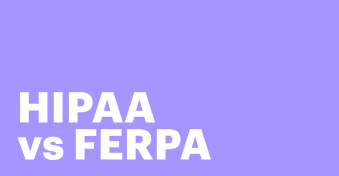As a healthcare professional, you’ve likely spent more time than you want on documentation.
According to the National Institutes of Health, doctors spend almost 35% of their day handling HIPAA paperwork, patient records, or insurance forms.1
The massive number of medical records can quickly lead to inefficiencies if you don’t have a robust system in place.
Before we get into the specifics of PandaDoc’s document automation for healthcare solutions, we’ll dive into some of the basic questions healthcare professionals have, like how document management software helps protect patient data, and how these solutions can provide cost savings and time savings to your healthcare teams.
What is document automation for healthcare?
At its core, document automation for healthcare is a way to simplify the way you write down, record, and communicate sensitive patient information.
By now, most hospitals have an electronic document management system in healthcare in place as well as a patient records management system – both of which ensure smooth communication.
Is there a need for better documentation systems in healthcare now?
Healthcare professionals working within healthcare organizations around the globe still face tons of challenges, even if they have an electronic document management system in place.
These challenges may include:
- Processing a large volume of electronic health records daily.
- Responding to the needs of patients, staff, and meeting regulatory standards in a timely manner.
- Adapting to a competitive healthcare environment where the top-level management may be focused on saving costs and boosting profits.
One of the biggest headaches in healthcare right now is how time-consuming these tasks can be.
That’s where new technology comes in, like faster document management systems and smarter electronic document processing.
These new solutions in electronic document management systems may offer a solution to help doctors, nurses, human resources, finance, and management automate routine tasks, helping to ensure that sensitive patient information and data security stays top priority.
What are the benefits of document automation for healthcare?
Let’s take a closer look at the benefits of document automation in health care:
- Simplify patient information collection: Automation makes gathering patient information easier and provides quick access to critical data.
- Reduced manual data entry: By automating processes, healthcare providers minimize manual data entry errors, ensuring accuracy in medical documentation.
- Enhance patient experience: Patients appreciate when things feel streamlined and easy. When seeking care, families are carrying a huge burden of stress and illness, so the less paperwork the better.
Strengthen data security: Healthcare document processing systems come with enhanced data controls to project sensitive patient information, lowering your risk as a healthcare institution.
We’re saving 3,000 hours annually and we’re three times more efficient…In the past year, we’ve been able to 10x our document management efficiency because of our partnership with PandaDoc. I’ve never been more impressed [with customer support]. They respond to me in less than an hour, even if there’s not a fix needed. It makes me feel like they’re always there for us.
Katie Buell, Digital Product Manager, TheKey
What are the 6 best document automation software for healthcare?
Here is a list of the most popular document automation providers, along with their pros, cons, and standout features.
1. PandaDoc
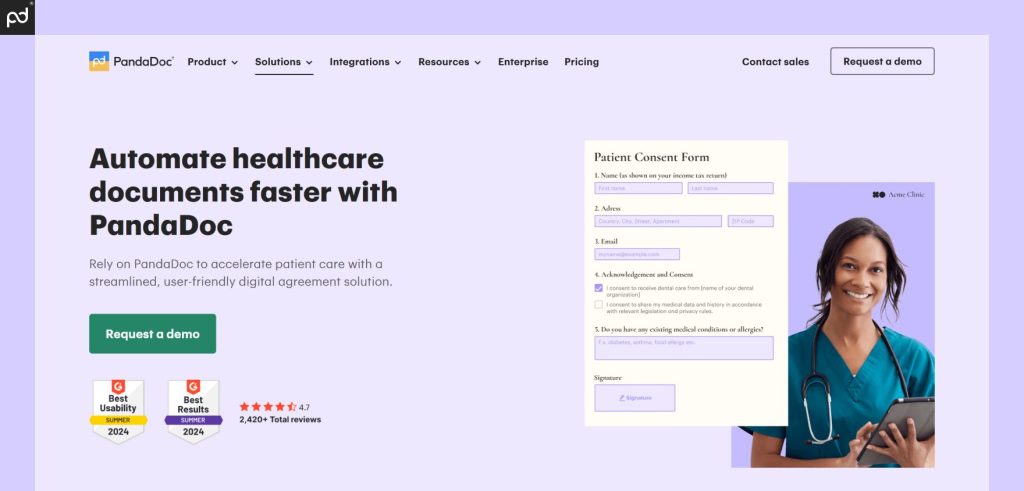
- Who: PandaDoc is a document management and eSignature platform that offers healthcare systems customizable templates, ways to easily collaborate on documents, audit trails, integration, and more.
- Pros: Easy-to-use interface, real-time tracking of document status, and easy eSignature options so patients can sign from anywhere.
- Cons: Not specifically designed for healthcare alone.
- Best for: Small, medium, and enterprise-level healthcare practices who need efficient document creation, collaboration, and eSigning capabilities.
2. Cerner PowerChart
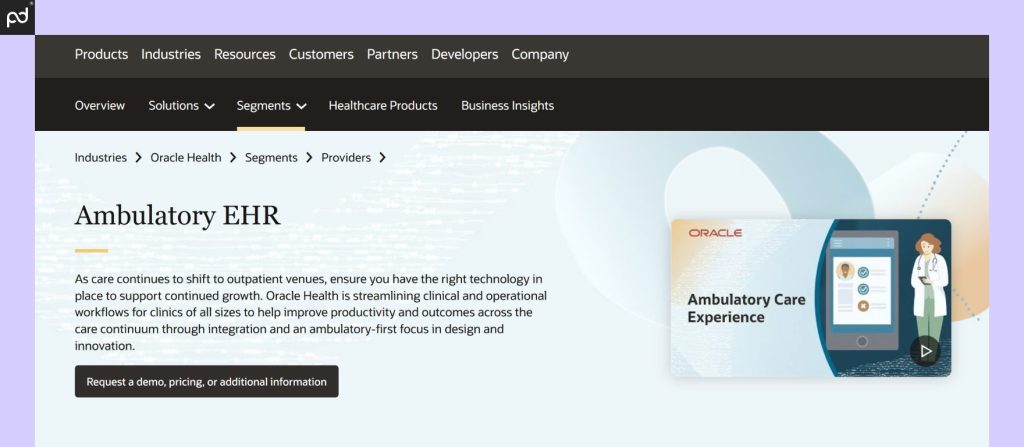
- Who: Cerner PowerChart is a powerhouse EHR platform that provides services to large-scale hospitals and even the United States government.
- Pros: Offers healthcare systems on-site and off-site hosting.
- Cons: Extremely detailed, steep learning curve for users.
- Best for: Large hospitals and healthcare systems requiring advanced EHR functionalities and document management.
3. Epic Systems
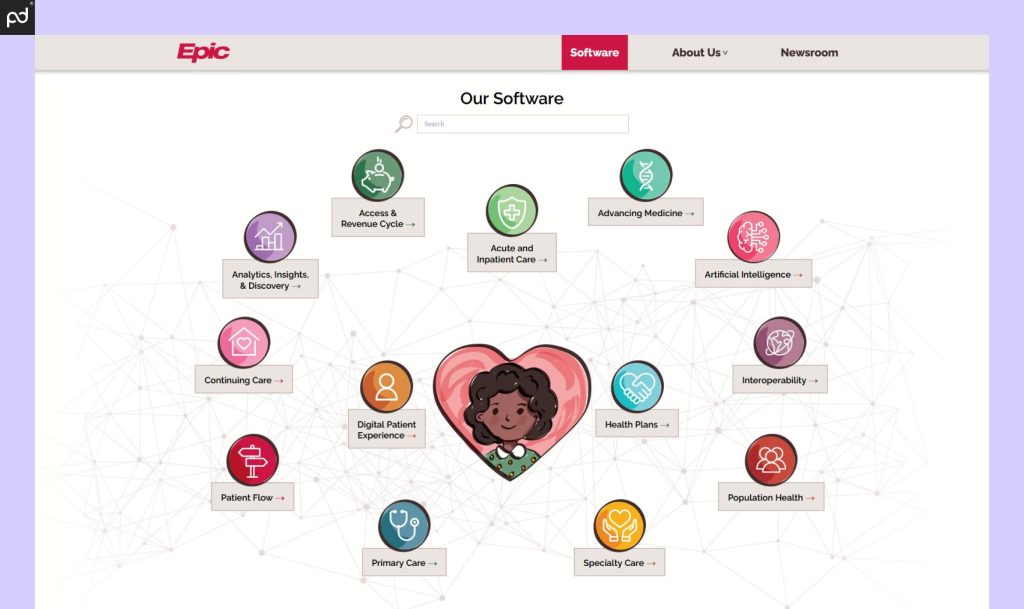
- Who: Epic Systems is a popular system across healthcare networks and if you’ve been to the hospital, chances are your healthcare team was using Epic Systems.
- Pros: User-friendly interface, interoperability– meaning healthcare providers can exchange information with other doctors.
- Cons: Extremely high fees to get started, steep learning curve
- Best for: Large healthcare organizations, research centers, academic medical centers, and connected health systems needing to exchange information regularly
4. Meditech Expanse
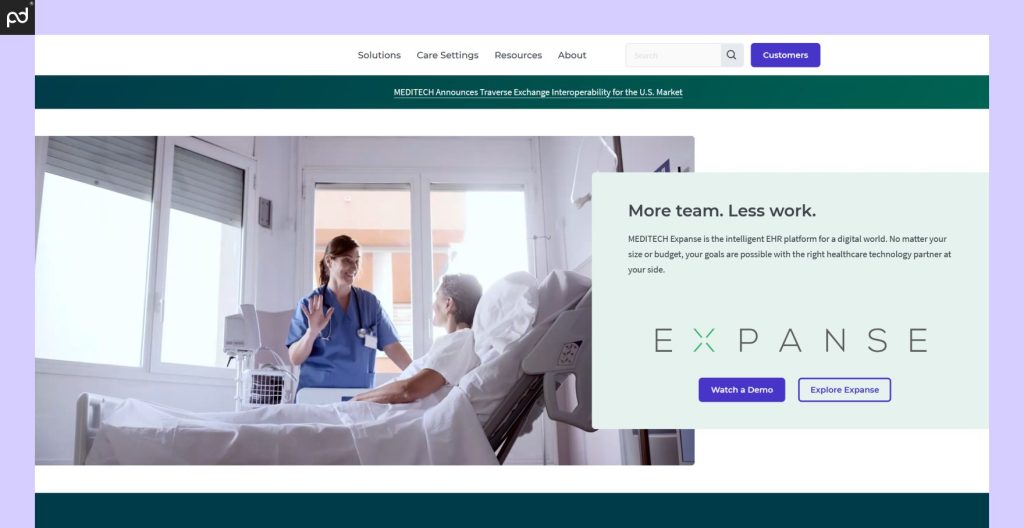
- Who: Meditech Expanse is an award-winning software that has been around for more than 10 years.
- Pros: Simple to use, Expanse Virtual Assistant allows doctors to be hands-free and dictate voice documentation
- Cons: Lack of features, not aesthetically pleasing, interface is still old-school
- Best for: Medium to large healthcare organizations seeking flexible document management and EHR integration.
5. NextGen Healthcare
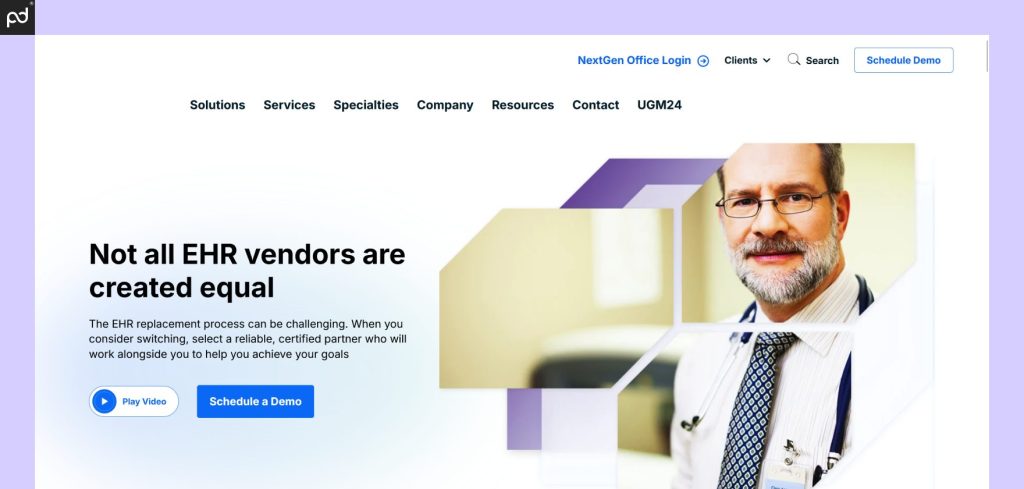
- Who: NextGen Healthcare has been serving the healthcare industry for more than 50 years and is physician focused.
- Pros: Great for data analytics, customer service team is based 100% in the US
- Cons: Difficult to understand everything the software offers, lots of features, steep learning curve
- Best for: Designed for small and large sized medical practices – they have two solutions – one geared for offices with 10 providers or less as well as an enterprise solution.
6. DocuSign
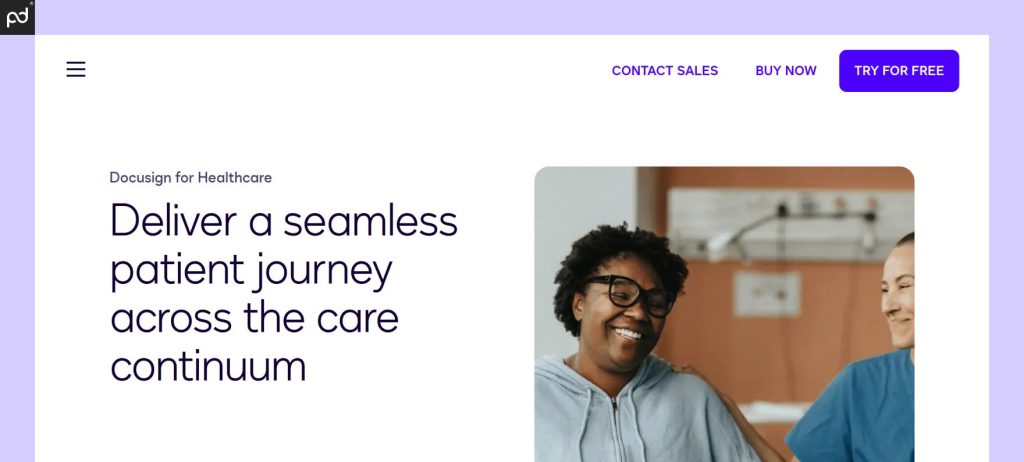
- Description: DocuSign is handy when it comes to document management, although it’s important to note it’s not specifically designed as a healthcare solution.
- Pros: Their eSignature features can integrate with an existing EHR.
- Cons: You will need to bolt this onto an existing solution.
- Best for: Small to medium sized offices that need to collect signatures electronically.
Disclaimer
PandaDoc is not a law firm, or a substitute for an attorney or law firm. This page is not intended to and does not provide legal advice. Should you have legal questions on the validity of e-signatures or digital signatures and the enforceability thereof, please consult with an attorney or law firm. Use of PandaDoc services are governed by our Terms of Use and Privacy Policy.


